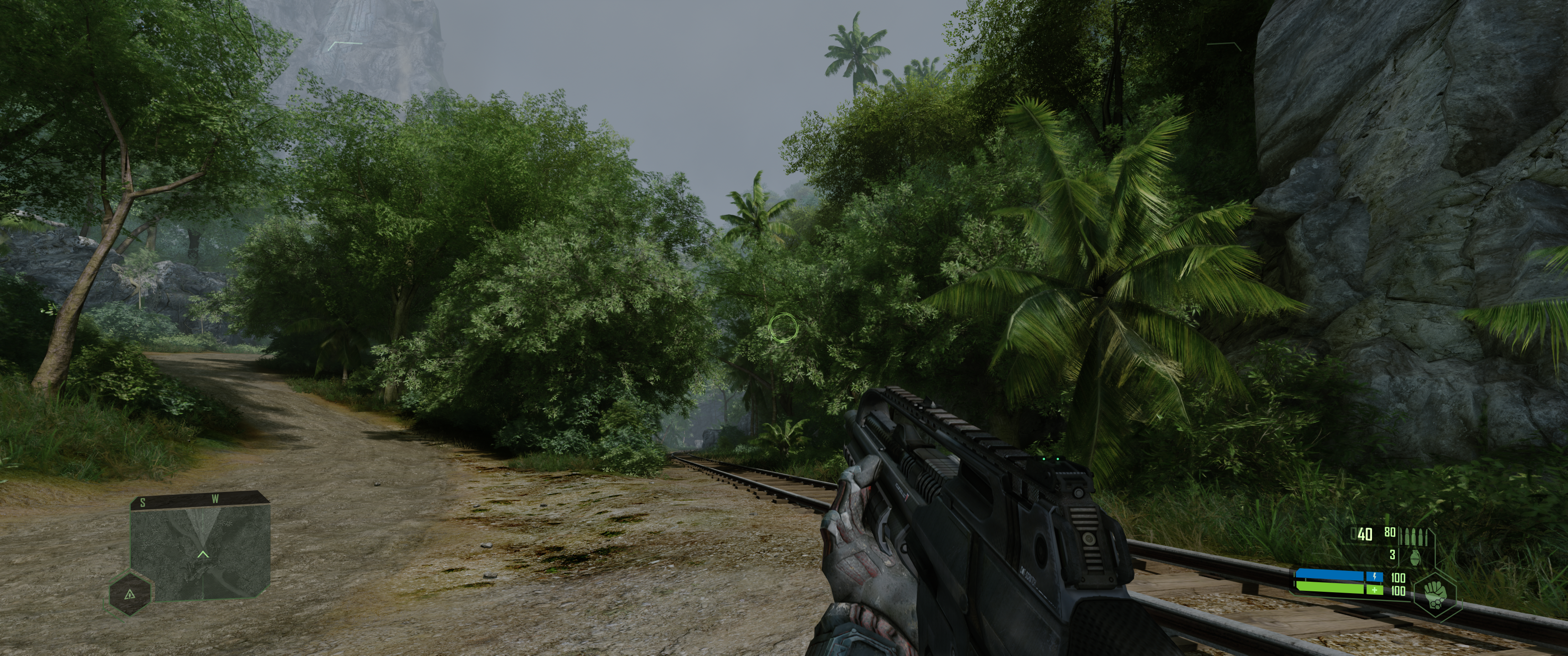Hands-On With Crysis Remastered’s New Ray Tracing Upgrade
Experimental "Boost" mode introduced
Crytek has just released a update for Crysis Remastered, version 2.1.2, with updates to the game's ray tracing graphics. The new update features an experimental Boost mode that pushes all the game's ray tracing reflections to even greater levels.
Boost mode enters Crysis Remastered as a purely experimental feature, but when enabled, it adds ray-traced reflections to almost every surface in-game, adds proper support for ray randomization on rough surfaces and boost specular reflectance on all surfaces by "about 5%," according to the announcement of the update.
Crysis Remastered Boost Mode: Hands-on
I tested the game with an RTX 2060 Super, with all the game's settings set to their maximum and DLSS set to balanced mode.
In testing the new Boost mode myself, I found the feature brings a very minor improvement to visual quality. As you can see in the screenshots below, surfaces like rocks and tree leaves look a bit brighter with Boost mode on. With Boost mode off, the game looks like it has higher contrast.


I also noticed that my framerate dropped by around 5 frames per second (fps) when using Boost mode, and that's with my average framerate being 35 fps with Boost mode disabled. That's a lot of lost performance for a minor bump in visual quality.
Overall, Boost mode seems like a cool idea, but I'd like to see a more noticeable visual improvement if it's to graduate past the experimental feature phase. As it stands, the ray tracing boost is barely noticeable at all when actually playing the game.
Interestingly, Crytek has been working on this boost mode for quite a while. In their announcement, the game's developers noted that Boost mode came about during the initial development of Crysis Remastered. Since the game is all about pushing PC graphics to the highest detail possible, the developers wanted to push the ray tracing envelope as high as they could too.
Get Tom's Hardware's best news and in-depth reviews, straight to your inbox.
The devs added that the update is targeted toward "ray tracing enthusiasts" specifically. This is probably why Boost mode is an option all by itself and not part of the "Can it Run Crysis?" graphical settings in the menu.
Bug Fixes
On the bright side, this update isn't only about enhancing ray tracing. There are a lot of bug fixes with this update too, as per the developer:
- Motion blur has been reactivated: Motion Blur was temporary disabled with 2.1.1, due to some issues where the motion blur effect was far more intense than intended. A fix has been implemented and motion blur is now available once again.
- Improvement made to the model for the SCAR.
- Fixed a bug that allowed players to activate Anti-Aliasing (AA) from the options menu when DLSS is turned on.
- Developer Note: By design, AA is not supposed to work while Nvidia's DLSS is active. To increase the visibility on this, AA will now be greyed out once DLSS has been turned on.
- Fixed a UI issue that resulted in the selected difficulty settings appearing as set to 'Easy' when another difficulty has been selected.
- Fixed some black or random textures that could appear when ray tracing is enabled on some PCs.
- Reduced and fixed several visible cracks that can appear in ray tracing geometry.
- Fixed a rare crash that could occur when ray tracing has been enabled.
- Fixed some incorrect texture tiling that could be visible when ray tracing is enabled.
- Fixed an issue that could result in stalls when loading ray tracing textures.
- Optimized the GPU memory usage in RTX mode (freed around 300+ MB on GPU).
- Fixed an issue with some light clip volumes support when ray tracing is enabled which will now allow for more precise RT shading.
- Fixed and issue that caused RayTracing Screen Space Reflections to not be visible on distant surfaces.
- Optimized RayTracing Screen Space Reflections performance for 4K.

Aaron Klotz is a contributing writer for Tom’s Hardware, covering news related to computer hardware such as CPUs, and graphics cards.